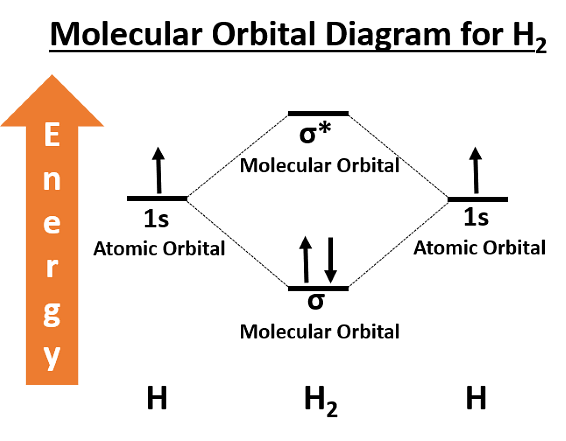In which of the following options the species changes from paramagnetic to diamagnetic and bond order increases.
- \(N_2→N_{2}^{+}\)
- \(O_2→O_{2}^{+}\)
- \(NO→NO^+\)
- \(O_2→O^+\)
The Correct Option is C
Solution and Explanation
Solution:
- The molecular orbital theory explains that bond order is given by the formula:
\[
\text{Bond Order} = \frac{1}{2} \left( \text{Number of bonding electrons} - \text{Number of antibonding electrons} \right).
\]
- \( O_2 \) has a bond order of 2 and is paramagnetic because it has two unpaired electrons.
- When \( O_2 \) undergoes reduction to \( O_2^{2-} \), it gains two electrons, and its bond order decreases to 1.
- In the case of \( NO \), it is paramagnetic with a bond order of 2. When \( NO \) loses an electron to become \( NO^+ \), it has no unpaired electrons and becomes diamagnetic. Furthermore, the bond order increases to 2.5.
Thus, the process \( NO \rightarrow NO^+ \) satisfies both conditions of increasing bond order and changing from paramagnetic to diamagnetic.
Top Questions on Molecular Orbital Theory
- In the following, the number of paramagnetic molecules are: O\(_2\), N\(_2\), F\(_2\), B\(_2\), Cl\(_2\).
- JEE Main - 2025
- Chemistry
- Molecular Orbital Theory
Which of the following statement is true with respect to H\(_2\)O, NH\(_3\) and CH\(_4\)?
(A) The central atoms of all the molecules are sp\(^3\) hybridized.
(B) The H–O–H, H–N–H and H–C–H angles in the above molecules are 104.5°, 107.5° and 109.5° respectively.
(C) The increasing order of dipole moment is CH\(_4\)<NH\(_3\)<H\(_2\)O.
(D) Both H\(_2\)O and NH\(_3\) are Lewis acids and CH\(_4\) is a Lewis base.
(E) A solution of NH\(_3\) in H\(_2\)O is basic. In this solution NH\(_3\) and H\(_2\)O act as Lowry-Bronsted acid and base respectively.
- JEE Main - 2025
- Chemistry
- Molecular Orbital Theory
Which of the following linear combinations of atomic orbitals will lead to the formation of molecular orbitals in homonuclear diatomic molecules (internuclear axis in z-direction)?
(1) \( 2p_z \) and \( 2p_x \)
(2) \( 2s \) and \( 2p_x \)
(3) \( 3d_{xy} \) and \( 3d_{x^2-y^2} \)
(4) \( 2s \) and \( 2p_z \)
(5) \( 2p_z \) and \( 3d_{x^2-y^2} \)
- JEE Main - 2025
- Chemistry
- Molecular Orbital Theory
- Arrange the following in increasing order of bond order: (A) He\(_2^+\)
(B) O\(_2^-\)
(C) HF
(D) NO\(^-\)- CUET (PG) - 2025
- Chemistry
- Molecular Orbital Theory
- The sum of the bond orders of O$_2^+$, O$_2^-$, O$_2$, O$_2^{2-$, and the sum of the unpaired electrons in them respectively are
- AP EAPCET - 2025
- Chemistry
- Molecular Orbital Theory
Questions Asked in JEE Main exam
0.01 mole of an organic compound (X) containing 10% hydrogen, on complete combustion, produced 0.9 g H₂O. Molar mass of (X) is ___________g mol\(^{-1}\).
- JEE Main - 2025
- Organic Chemistry
- In the Claisen-Schmidt reaction to prepare dibenzalacetone from 5.3 g benzaldehyde, a total of 3.51 g of product was obtained. The percentage yield in this reaction was _____.
- JEE Main - 2025
- Reaction Mechanisms & Synthesis
- The sum of all local minimum values of the function \( f(x) \) as defined below is:
\[ f(x) = \begin{cases} 1 - 2x & \text{if } x < -1, \\[10pt] \frac{1}{3}(7 + 2|x|) & \text{if } -1 \leq x \leq 2, \\[10pt] \frac{11}{18}(x-4)(x-5) & \text{if } x > 2. \end{cases} \]- JEE Main - 2025
- Functions
- Two balls are selected at random one by one without replacement from a bag containing 4 white and 6 black balls. If the probability that the first selected ball is black, given that the second selected ball is also black, is \(\frac{m}{n}\), where gcd(m, n) = 1, then m + n is equal to:
- JEE Main - 2025
- Probability
If the system of equations \[ (\lambda - 1)x + (\lambda - 4)y + \lambda z = 5 \] \[ \lambda x + (\lambda - 1)y + (\lambda - 4)z = 7 \] \[ (\lambda + 1)x + (\lambda + 2)y - (\lambda + 2)z = 9 \] has infinitely many solutions, then \( \lambda^2 + \lambda \) is equal to:
- JEE Main - 2025
- Matrices and Determinants
Concepts Used:
Molecular Orbital Theory
The Molecular Orbital Theory is a more sophisticated model of chemical bonding where new molecular orbitals are generated using a mathematical process called Linear Combination of Atomic Orbitals (LCAO).
Molecular Orbital theory is a chemical bonding theory that states that individual atoms combine together to form molecular orbitals. Due to this arrangement in MOT Theory, electrons associated with different nuclei can be found in different atomic orbitals. In molecular orbital theory, the electrons present in a molecule are not assigned to individual chemical bonds between the atoms. Rather, they are treated as moving under the influence of the atomic nuclei in the entire molecule.
